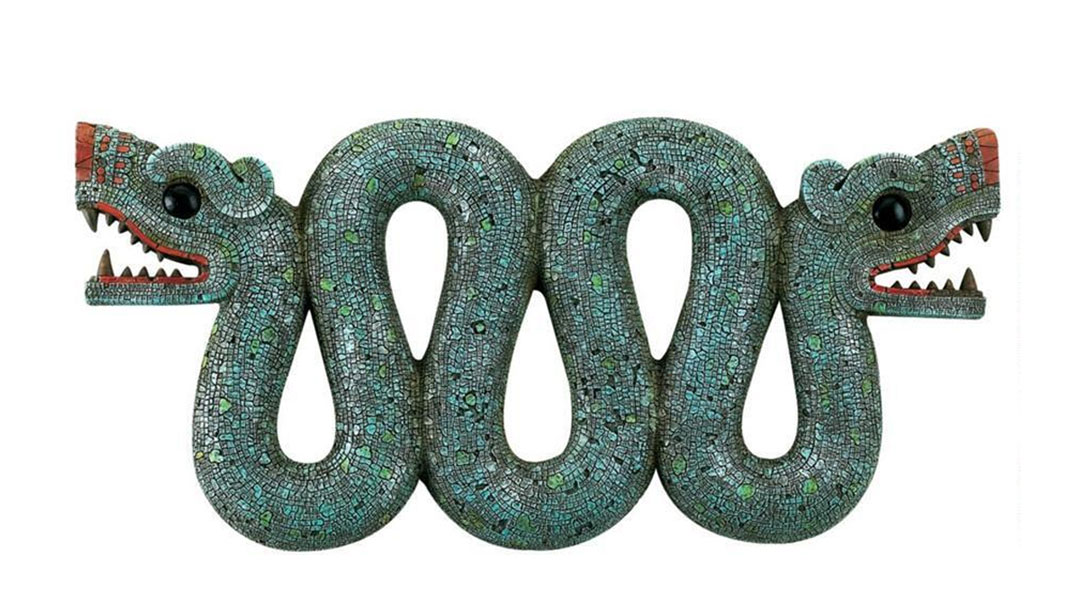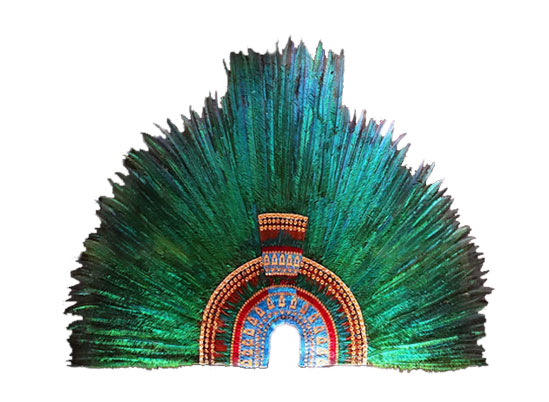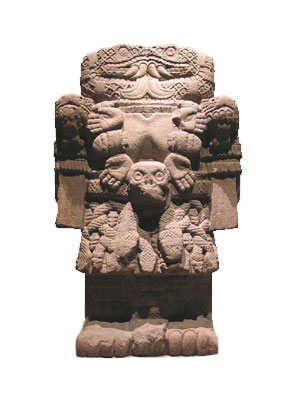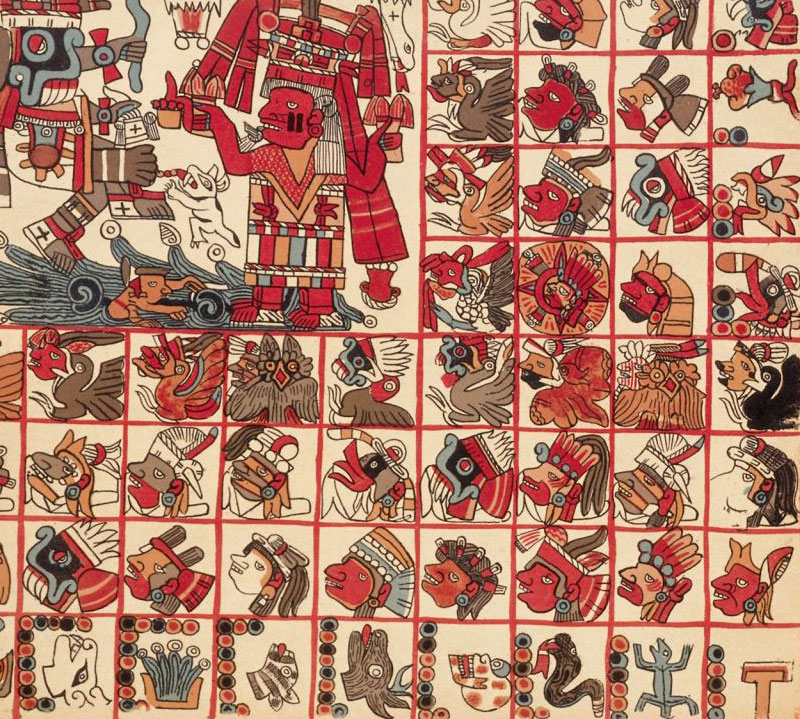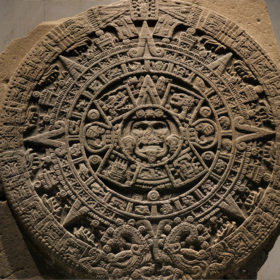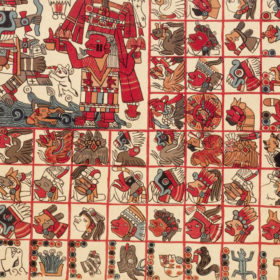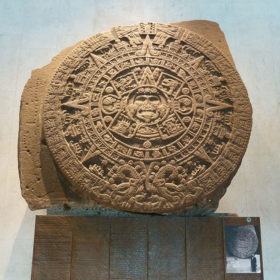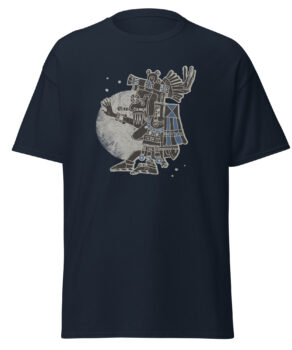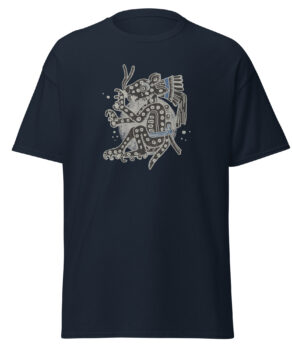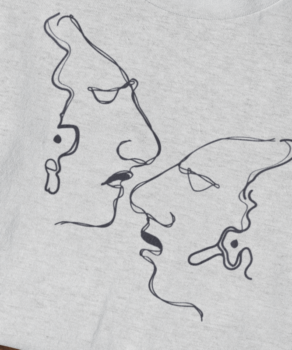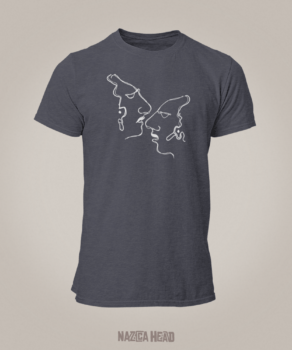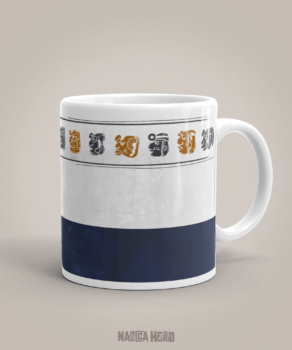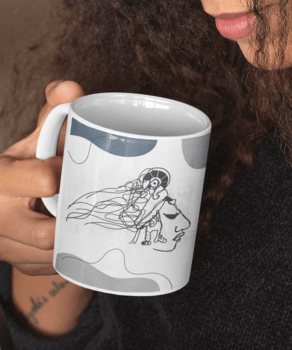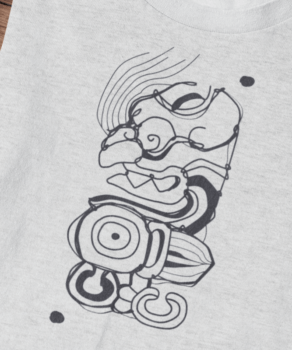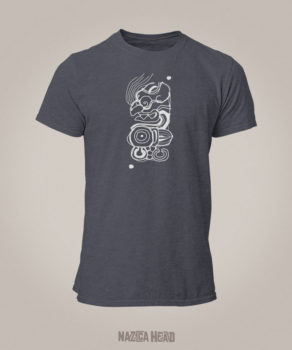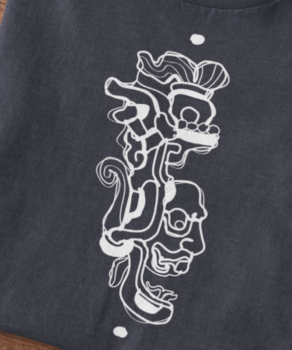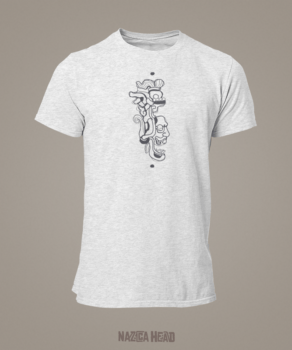![]() The Aztecs were a group of nomadic “Mexica” who found themselves to be the outcasts after a long journey from Aztlȃn. They later met their god and they began to create the Aztec empire. This small group of people grew to numbers that no one could ever imagine. And with that, came a strong military which helped them conquer the neighboring communities.
The Aztecs were a group of nomadic “Mexica” who found themselves to be the outcasts after a long journey from Aztlȃn. They later met their god and they began to create the Aztec empire. This small group of people grew to numbers that no one could ever imagine. And with that, came a strong military which helped them conquer the neighboring communities.
However, a few years down the line, in 1519, the Aztec empire engaged in a long and disastrous battle with the Spanish. Unfortunately, this led to their collapse and virtual extinction.
But it was not always about war, arrows, and fights! The Empire had beautiful Aztec art and culture. Let’s learn more about it!
(With that in mind, at NazcaHead, you will find different Aztec art representations in some of the current outfits in a stylish way. Take a look around and we’re sure you will fall in love with our products that fit your specific taste and fashion statement.)
PRESERVING AZTEC ART
AND CULTURE
WHILE GIVING CHARITable donations TO OUR SOCIETY
At NazcaHead, we love the idea of preserving the Aztec culture but that’s not our only objective. Wuth every merch you buy from us, 10% is sent to UNESCO’s World Heritage Center.
We believe that with a little love, ‘we can change the world’.
The beautiful and rich Aztec art was not only introduced for aesthetic needs but also for religious purposes. For that, the art was created as a form of honoring the gods. The Aztec people decorated the walls of their temples using a wide variety of carvings as well as huge stone sculptures of their gods.
The most popular Aztec art is a sculpture of the Calendar Stone which features a disk that represents the sun god. The Aztec art also features smaller pieces of art that were made from quartz or jade and decorated with brightly colored bird feathers.
Besides, they had a rich variation of pottery that they made from ceramic pieces. The pottery was decorated with carvings, stamps, and paintings. The finest of these Aztec art pieces were preserved for the rich or use during important rituals.
Double-Headed Serpent
The serpent symbol occurs in several Aztec arts. In ancient Aztec, this ornament was worn on the chest during ceremonies. Typically, the double-headed serpent was carved from wood. Each ornament had a hollow at the back.
This serpent imagery played an important role in the religion of the Aztec Empire. In fact, the ability of the snake to shed skin every year symbolized the idea of transformation and renewal.
More importantly, the serpent symbolizes the transition between different layers of the cosmos.
Montezuma Headdress
The Montezuma’s headdress was a part of the series of art forms that represented the Aztec Emperor’s present that he gave as a welcome gesture to Hernan Cortes in 1519.
This headdress was made from Quetzal feathers that were set in gold. The headdress is a combination of feathers from 4 different species of birds.
Coatlicue Statue
The Coatlicue statue is a massive ornament that stands in the middle of the Mexico City National Museum. This statue is about 10 feet tall hence it towers above humans.
So what is the meaning of this Coatlicue statue?
Coatlicue is an ancient deity with incredible powers. She is believed to be the mother of not only the stars and the moon but also the god of war known as Huitzilopochtli. This made her one of the most sacred gods in all of the Aztec empire.
The goddess was represented by two serpents with forked tongues and drooping fangs. But, her name was coined from the representation of a snake-like skirt that she is always represented with. The name Coatlicue statue can be loosely translated to mean, ‘The one with a serpent skirt’.
The stone of Tizoc
Also known as the Sacrificial stone or Tizoc stone, is a large and round stone that is carved out. The stone has proven to have a surprisingly fascinating and detailed design.
With this, the designer was able to combine a wide range of patterns and images that all added up to make this very impressive piece of art.
This stone clearly depicts the various phases of victories in Tizoc. These have been represented and magnificently incorporated in a complex combination of linearly and angularly spaced symbols. This piece of art gives an insight into the artist’s prowess in mathematics. The stone was majorly used during human sacrifices.
The major spoken language in Aztec was Nahuatl. It was also the widely spoken language in the majority of the Mesoamerica.
Nevertheless, the origin of Nahuatl writing is not clear. It is usually compared to the Mixtec writing because they both use dots to represent numbers below twenty, unlike the Zapotec and Maya languages which use bar-and-dot.
Aztec writing was primarily done on perishable media like paper codices and deer-skin. Due to the purposeful obliteration of books by the Aztecs and the Spanish conquerors, alongside the ravages of time, no pre-Colombian book survived to the modern era.
Any surviving document with Nahuatl writing was collected after the conquest and comprised a mixture of Spanish notes and some Aztecs glyphs.
The Aztec writing had three main functions – to mark the calendrical dates, to write names of places and people, and to record accounting and mathematical calculations. Just like most of the Mesoamerican scrips, the core of Aztec writing consists mainly of a set of the vigesimal number system and calendrical signs.
The Aztec Sun Stone is the most well-known iconography to ever be recovered. It symbolizes the Mexica idea of time as well as cosmological beliefs and loyalty to the sun god Tonatiuh. This iconography is said to portray the five worlds of the sun, which conforms to the Aztec myth that there were different periods of creation and destruction. Its purpose is believed to have been as a sacrificial altar or as a narrative monument.
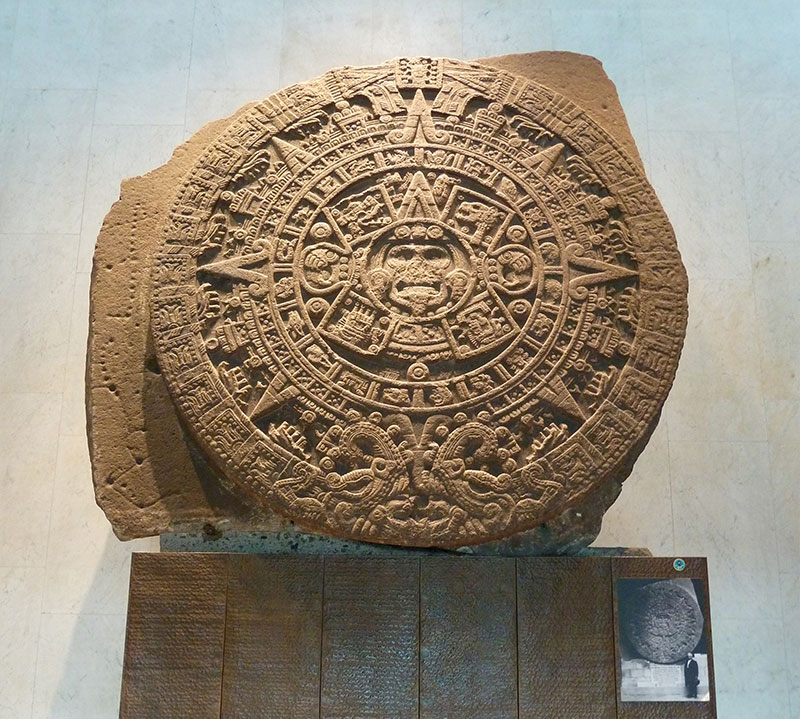
The dating system in Aztec was based on the Mayan Calendar. It comprised a ritual cycle of 260 days as well as a 365-day civil cycle.
The ritual circle, which was also known as tonalpohualli, consisted of two smaller cycles, an ordered arrangement 20 named days and an order of days numbered from 1 to 13-day circle. This calendar was central to the Aztec religious practices and each 20 numbered cycles within the calendar were linked with different deity. Also, each named day was linked with a unique god.
The civil year in Aztec calendar was divided into 18 months, each made of 20 days, alongside 5 extra days known as nemontemi, which were considered to be cursed.
The Aztec ritual and civil cycles, just like the Mayan calendar, returned to the same position in relation to each other after every 52 years, a period when the Aztecs will celebrate as the New Fire Ceremony or the Binding Up of the Years.
In 1970, a circular calendar stone weighing 25 tons and measuring 12 feet or 3.7 meters, was unearthed in Mexico City (the site of the former Aztec city, Tenochtitlan). At the center of the circular calendar is the face of the Aztec sun god, Tonatiuh, and is bounded by four square panels honoring earlier personifications of the god that represent the four periods of the world.


